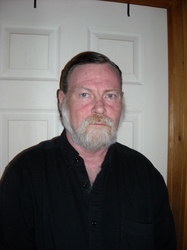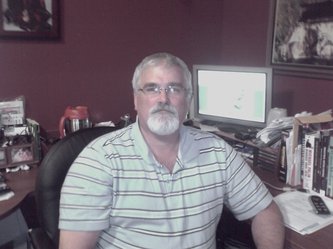Course - Three Phase Squirrel Cage Induction Motor
A.C. MOTORS:
A.C. Motors are used worldwide in many applications to transform electrical energy into mechanical energy. There are many different types of A.C. Motors, but this course will be focusing on three phase A.C. induction motors; this is the most commonly used motor in industrial applications.
Instructors – M. Purdy – J. Hedges – K. Evans
MIKE PURDY (Left picture)
I earned my Journeyman’s Interprovincial Red Seal Certificate in 1977 and have Worked in Residential, Commercial and Industrial Maintenance/Construction all my adult life. I am currently an experienced Instructor of 4 years at Academy Canada and enjoy sharing my knowledge and experience to the up and coming work force.
I earned my Journeyman’s Interprovincial Red Seal Certificate in 1977 and have Worked in Residential, Commercial and Industrial Maintenance/Construction all my adult life. I am currently an experienced Instructor of 4 years at Academy Canada and enjoy sharing my knowledge and experience to the up and coming work force.
JAMES HEDGES (above center)
I began my electrical career in the United States Air Force where I trained as an aircraft technical specialist in electrical/ electronic systems. A wide variety of job experiences have included construction, repair and maintenance of industrial plants, Electrical Officer (marine), commercial maintenance and residential construction and upgrades. Interprovincial Red Seal Certified and working since 1977 I currently work as an instructor at Academy Canada.
I began my electrical career in the United States Air Force where I trained as an aircraft technical specialist in electrical/ electronic systems. A wide variety of job experiences have included construction, repair and maintenance of industrial plants, Electrical Officer (marine), commercial maintenance and residential construction and upgrades. Interprovincial Red Seal Certified and working since 1977 I currently work as an instructor at Academy Canada.
KEN EVANS (Right picture)
I hold a Red Seal Inter-Provincial Journeyman’s Electrical Licence, Along with a diploma in a Three Year Electronics Course. Thirty seven years of working for NFLD Hydro had me taking various Industrial courses that are too numerous to mention. I worked at Holyrood Generating Station for 19 years and for 10 of those years I was the Electrical Supervisor. I then took a position at Hydro Place as Maintenance Superintendent where I worked for 10 years, and then I transferred to Churchill Falls to take up the position of Maintenance Manager for the Town Of Churchill Falls where I worked for eight years and finally retired after working for NFLD Hydro for 37 years. I took on the job of Electrical Instructor three years ago and bring approximately 40 years of experience in the Electrical Field to the classroom. I have all of this knowledge and experience and thought that it would be a good idea to pass some of this acquired knowledge and experience onto others.
Prerequisites
Students must have completed a nine month Pre-Employment Electrical Course and have obtained a 70% pass mark in all courses in order to meet the entry requirements for this course. Students are required to have “The Delmar Industrial Motor Maintenance and Troubleshooting Book 5th edition” this book is available at the book store and the price is $145.00. Listed below are the courses that the student must have completed before qualifying for this course.
A. First Aid
B. Safety Practices
C. Hand Tools
D. Power Tools
E. Canadian Electrical Code
F. D.C. theory ( magnetism & Ohm’s Law)
G. Conductors
H. Protective Devices
I. Single Phase Theory
J. Three Phase Theory
K. Distribution Equipment
L. Raceways Wireways and Bussways
M. Single Phase A.C. Motors
N. Three Phase A.C. motors
O. Troubleshooting
A. First Aid
B. Safety Practices
C. Hand Tools
D. Power Tools
E. Canadian Electrical Code
F. D.C. theory ( magnetism & Ohm’s Law)
G. Conductors
H. Protective Devices
I. Single Phase Theory
J. Three Phase Theory
K. Distribution Equipment
L. Raceways Wireways and Bussways
M. Single Phase A.C. Motors
N. Three Phase A.C. motors
O. Troubleshooting
COURSE DURATION:
Academic Theory : five days three hours per day
Practical application: four days three hours per day with Volt Lab Equipment
Academic Theory : five days three hours per day
Practical application: four days three hours per day with Volt Lab Equipment
OBJECTIVES:
#1 Motor Operating Principles
#2 Parts of a Motor
#3 How to Disassemble and Assemble a Motor
#4 Maintenance and Troubleshooting
#5 Test Run the Motor
PRESENTATION:
1. Introduction and show Video.
2. Introduction and Video on Parts of a Motor
3. Introduction and Video on Assembly and Disassembly of a Motor.
4. Introduction and Video on Maintenance and troubleshooting.
5. Introduction to Testing a Motor and Video.
6. Introduction on Supplemental Information.
7. Final test
RESOURCES:
1. Lab-Volt Dissectible Machines Model 8020
2. Test Equipment to conduct tests on a Motor
Voltmeter, Ohmmeter, Clip on Ammeter, and a Tachometer
3. Hand tools to disassemble and reassemble the motor
EVALUATION:
(1) Discussion Period with students.
(2) Practical Test
(A) Testing for voltage
(B) Testing for amperage
(C) Testing for continuity of windings and Insulation test.
(D) Checking motor R.P.M.s
(3) Written Test
CLASSROOM EQUIPMENT :
Hard Ware: Smart Whiteboard or Overhead projector (to use with Power Point Presentation) Personal Computer or Laptop with Speakers
Software: Windows XP ,Office 2003,Adobe Acrobat 8 , Windows Media Player 10,
Internet browser (Internet Explorer)
Lab Equipment: LabVolt Model 8020
Hard Ware: Smart Whiteboard or Overhead projector (to use with Power Point Presentation) Personal Computer or Laptop with Speakers
Software: Windows XP ,Office 2003,Adobe Acrobat 8 , Windows Media Player 10,
Internet browser (Internet Explorer)
Lab Equipment: LabVolt Model 8020
INTRODUCTION:
Welcome to the Basics of A .C . Motors, as you already have a basic understanding of electrical concepts and have completed the prerequisites for this, we will begin the course right away. What we will be covering in this course are the different parts of a motor, how to disassemble a motor, the proper maintenance procedures to be performed on a motor, how to assemble a motor, how to test run a motor and how to troubleshoot a motor.
Upon completion of this course you will be able to:
A. Describe the construction of a three phase A.C. Motor.
B. Describe the information displayed on the motor nameplate.
C. Describe the different parts of a motor.
D. Describe the proper maintenance procedures that are to be performed on a motor.
E. Describe how to disassemble and reassemble a motor.
F. Describe how to connect up a motor for test purposes.
G. Perform testing on a motor for proper voltage.
H. Perform testing on a motor for amperage.
I. Perform testing on a motor for proper R.P.M.s.
J. Perform testing on a motor for electrical continuity.
K. Perform testing on a motor using a Mega ohm-meter.
TEST ASSESSMENTS;
Passing Mark for this course is 70%
Marks assigned for the tests are;
(A) Assembling and Disassembling a Motor 20%
(B) Testing for Voltage 5%
(C) Testing for Amperage 5%
(D) Testing for Continuity 10%
(E) Testing Motor RPM’s 10%
FINAL WRITTEN TEST 50%
TOTAL 100%



